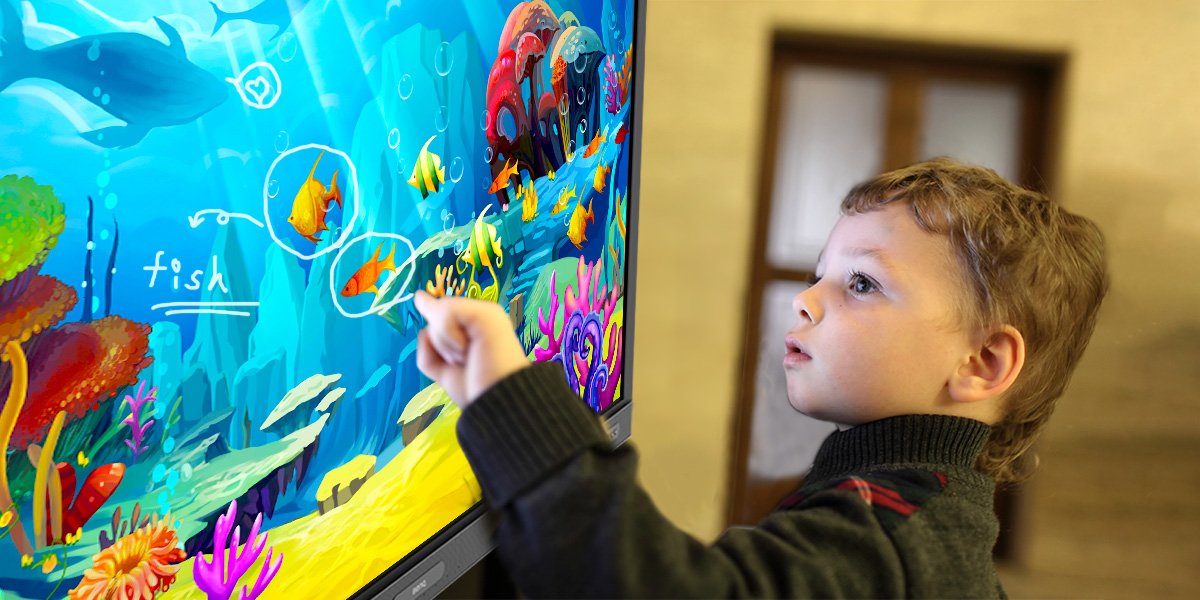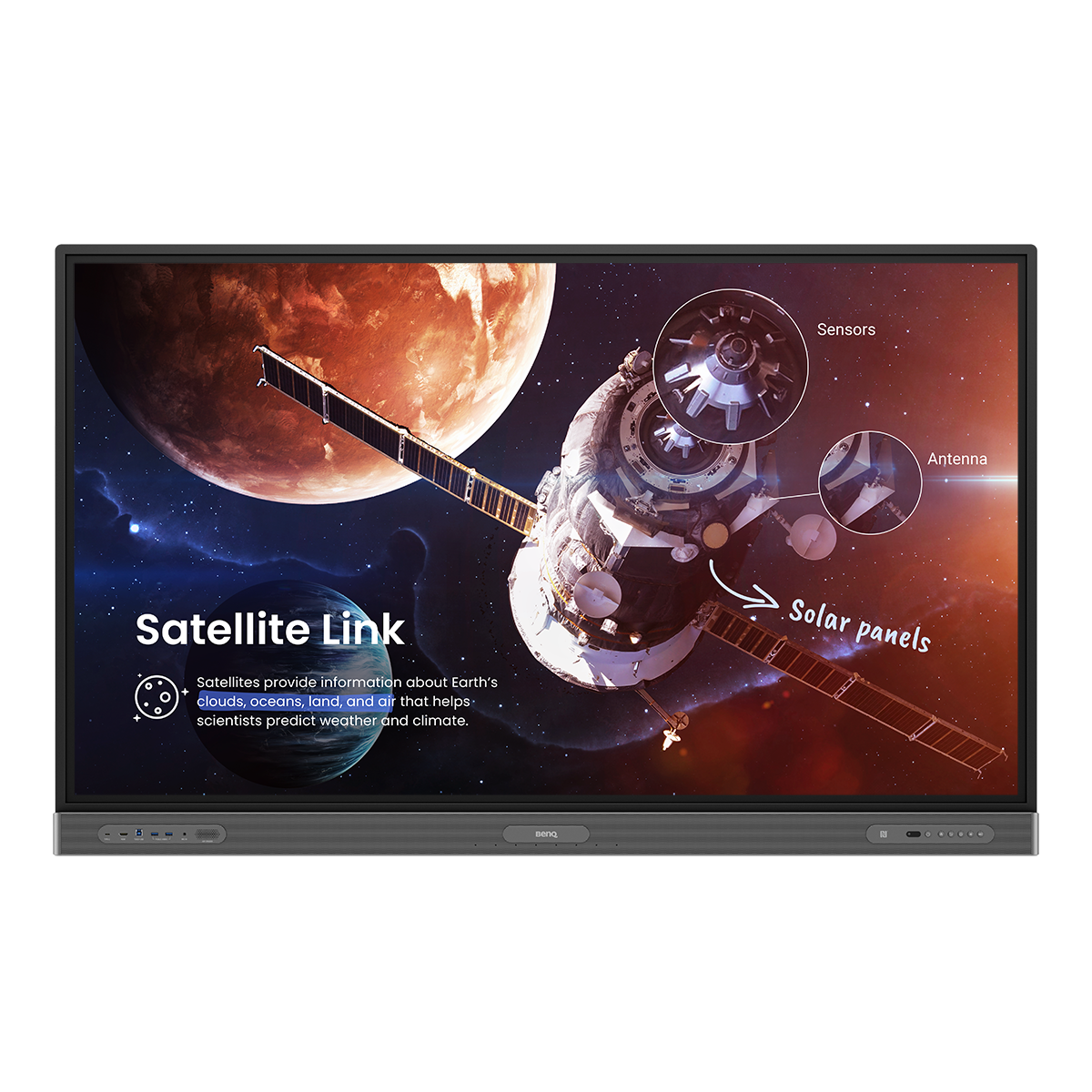Interactive educational displays make class time healthy, playful, and dynamic


In 2022, the RCH National Child Health Poll in Australia found that it’s now more common for children to play on devices like a phone or tablet than to play outside, with over half of children playing on digital devices or screens most days. This is a worrisome trend, since research shows that excessive blue light exposure in both the daytime and nighttime disrupts children’s sleep patterns by inhibiting the release of melatonin, leading to serious cognitive, behavioral, and mental health problems.
On the other hand, research shows that digital technology has huge benefits in early childhood education, where teachers are using it to promote play and interactive learning. This means cutting children off from screens entirely—if even possible—would be counterproductive. Instead, both parents and teachers need to find ways to use screens wisely and safely.
That’s what the BenQ Board is for. The BenQ Board is an interactive display for classroom teaching designed to make early childhood education both safe and playful. BenQ’s signature eye-care technology filters out blue light to prevent damage to the eyes. It also automatically adjusts brightness and prevents screen flicker to help with screen fatigue and sleep problems.
On top of its Eyesafe-certified display, the BenQ Board’s ClassroomCare® health and safety features include germ-resistant materials and an air ionizer that keeps air in the classroom safe and healthy for children. With these features, the BenQ Board fosters the healthy learning environment our youngest learners need.
Why interactive technology is important in early childhood education
Preschool teachers widely agree that preschool education should be fun and engaging, not stressful, and should emphasize play over academics. In one representative study conducted by education researcher Joon Sun Lee, preschool teachers agreed “that preschool education should promote children’s social, emotional, and physical well-being [...] and that preschool teachers should consider individual differences among children, allow children to choose and to direct their own play and exploration without any stress, and develop preschool curricula based on children’s interests and everyday lives.”
However, early childhood education researchers and policymakers also stress that young learners need to start getting used to academic learning early on so they’ll have an easier time learning how to read and write. To introduce children to academics in a way they find motivating and fun, early childhood education needs to combine learning and play. To do this, teachers can use teaching tools like interactive whiteboards.
Research shows that interactive whiteboards can improve outcomes in early childhood education across many subjects, from literacy and English language learning to math and science. In literacy, for example, teachers can use interactive whiteboards to share multimedia ebooks with text, sound, images, color, and animation. This motivates children to learn and helps them concentrate. In this vein, preschool teachers can use EZWrite, the BenQ Board’s interactive whiteboard app, to hold children’s attention with videos and visuals.


How interactive display helps young learners grow, learn, and play
The BenQ Board’s touchscreen and pens are germ-resistant. It also features built-in air quality sensors. The air ionizer automatically removes harmful particles from the surrounding air. In addition to preventing blue light exposure, the display is anti-glare, so children can see what’s on screen no matter where they’re sitting.
With the BenQ Board, teachers can not only share visuals that draw young learners in, they can also lead games that help children learn through play. First off, teachers can put school tablets to good use by leading quiz games with Kahoot!, which get children excited about learning while letting teachers track how much they’ve learned and remembered.
But teachers have found more creative ways to use the board’s interactive features. One teacher at a Play and Learn Pre School uses InstaShare 2 to share student photos for show and tell days, helping to build students' confidence in speaking in front of the group. And in one kindergarten in Germany, teachers let children take advantage of the board’s multi-touch recognition to doodle on the board together during breaks.
Conclusion
Excessive blue light exposure is a significant cause for concern for teachers and parents. But teachers can also use digital technology to make early childhood education engaging and fun. The BenQ Board’s Eyesafe-certified low-blue-light and flicker-free display allows teachers and children to benefit from digital technology without the worries of eyestrain or other health issues.
The board’s other ClassroomCare® features protect children from other health risks. In particular, the air ionizer and antibacterial touchscreen and pen prevent the spread of germs via air or surfaces even in an active, interactive classroom. The BenQ Board’s unique health and safety features guarantee a safe and healthy classroom environment for young learners, while letting them play games and discover the joys of learning.



